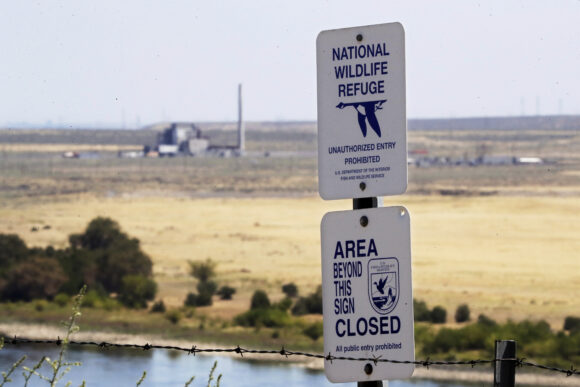The U.S. Department of Energy has confirmed that two underground structures at the decommissioned Hanford nuclear reservation in Washington state have been stabilized after they were deemed at risk of collapsing and spreading radioactive contamination into the air.
“With this work completed, Hanford has ensured the stability of these structures and reduced risks to workers and the environment,” department spokesperson Geoff Tyree said.
The partial collapse of a tunnel storing nuclear waste the nuclear reservation in 2017 prompted a federal study which concluded last year that a large settling tank and two trenches where plutonium-contaminated liquids were poured into the ground for disposal posed a high risk of collapse and contamination, Tri-City Herald reported Tuesday.
The Hanford reservation produced plutonium for nuclear weapons during the Cold War and World War II, leaving 56 million gallons (212 million litres) of radioactive waste in underground tanks. The largest of the three underground structures, which operated from 1955 to 1962, was estimated to be contaminated with 105 pounds (48 kilograms) of plutonium.
Scott Sax, president of Hanford contractor Central Plateau Cleanup Co., told employees that the three underground structures identified in the study were filled with concrete-like grout to prevent them from collapsing.
The work was done by White Shield Inc. of Pasco under a contract originally valued at about $4 million.
Sax also said that at least one of the trenches was buried deep enough to prevent nuclear waste from releasing into the air in the event of a collapse.
“Routine monitoring will continue to ensure all three structures remain stable,” Sax said, at least until further environmental cleanup action is taken.
Final cleanup plans for the structures have not yet been made as the Energy Department focuses on other high-priority projects, including capsules of radioactive waste that are at risk of releasing contamination in the event of a severe earthquake.
About $2.5 billion a year is being spent to stabilize and clean up waste and contamination left at the 580-square-mile (1,500-square-kilometer) site in Richland, Washington about 200 miles (322 kilometers) southeast of Seattle, officials said.
Top Photo: In this 2019 photo, a sign designates a boundary of the Hanford Reach National Monument as the world’s first large scale nuclear reactor, the B Reactor, is seen in the background where it sits unused on the Hanford Nuclear Reservation along the Columbia River near Richland, Wash. The Energy Department estimates it will cost between $323 billion and $677 billion more to finish the costliest cleanup, at the Hanford Site in Washington state where the government produced plutonium for bombs and missiles. (AP Photo/Elaine Thompson)
Was this article valuable?
Here are more articles you may enjoy.


 OpenAI And Microsoft Sued Over Murder-Suicide Blamed on ChatGPT
OpenAI And Microsoft Sued Over Murder-Suicide Blamed on ChatGPT  Allianz Built An AI Agent to Train Claims Professionals in Virtual Reality
Allianz Built An AI Agent to Train Claims Professionals in Virtual Reality  JPMorgan Wins Gender Pay Gap Dispute Against London Analyst
JPMorgan Wins Gender Pay Gap Dispute Against London Analyst  Billionaire NFL Owner Suing Over Billboards Near His SoFi Stadium
Billionaire NFL Owner Suing Over Billboards Near His SoFi Stadium 